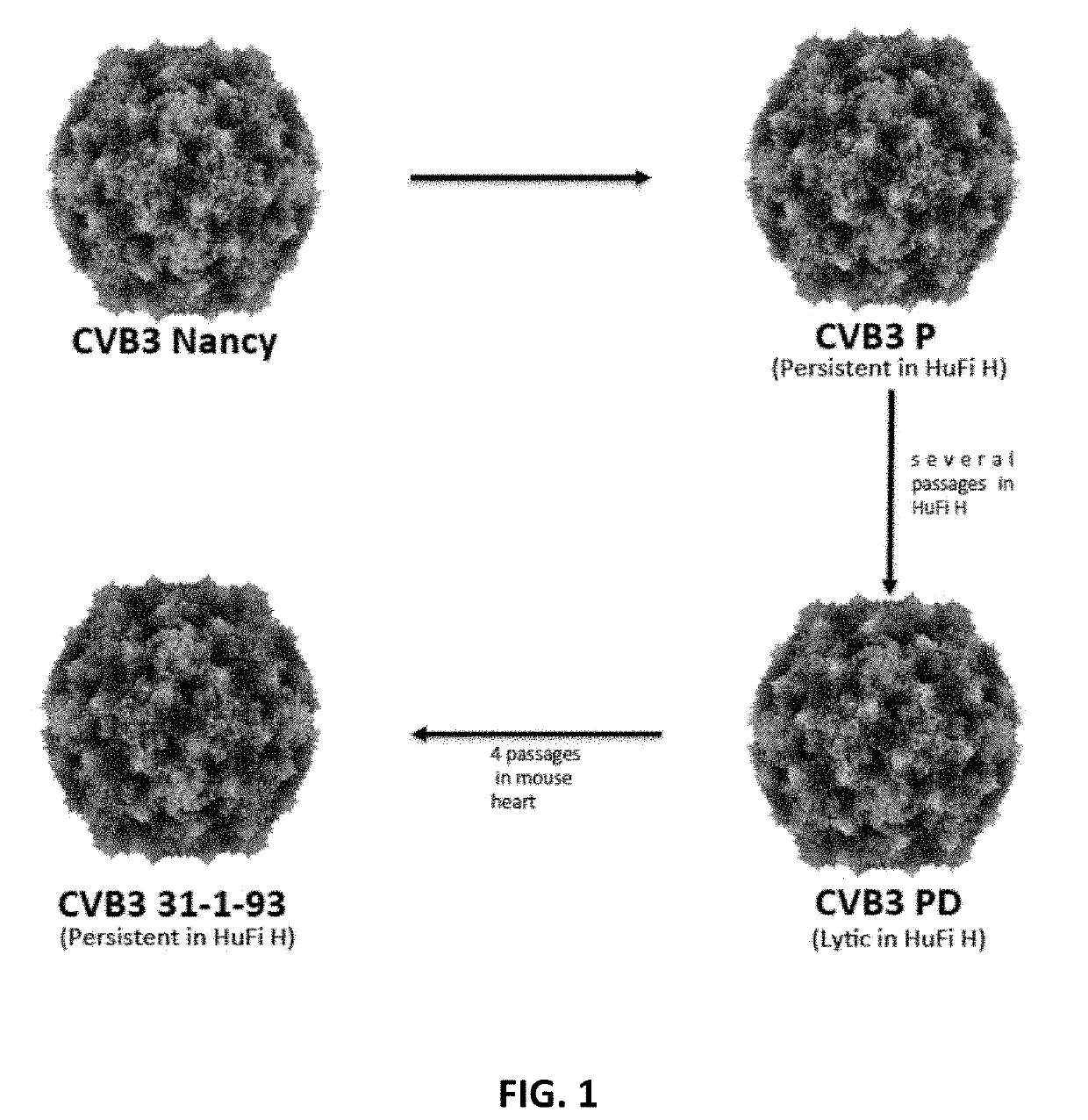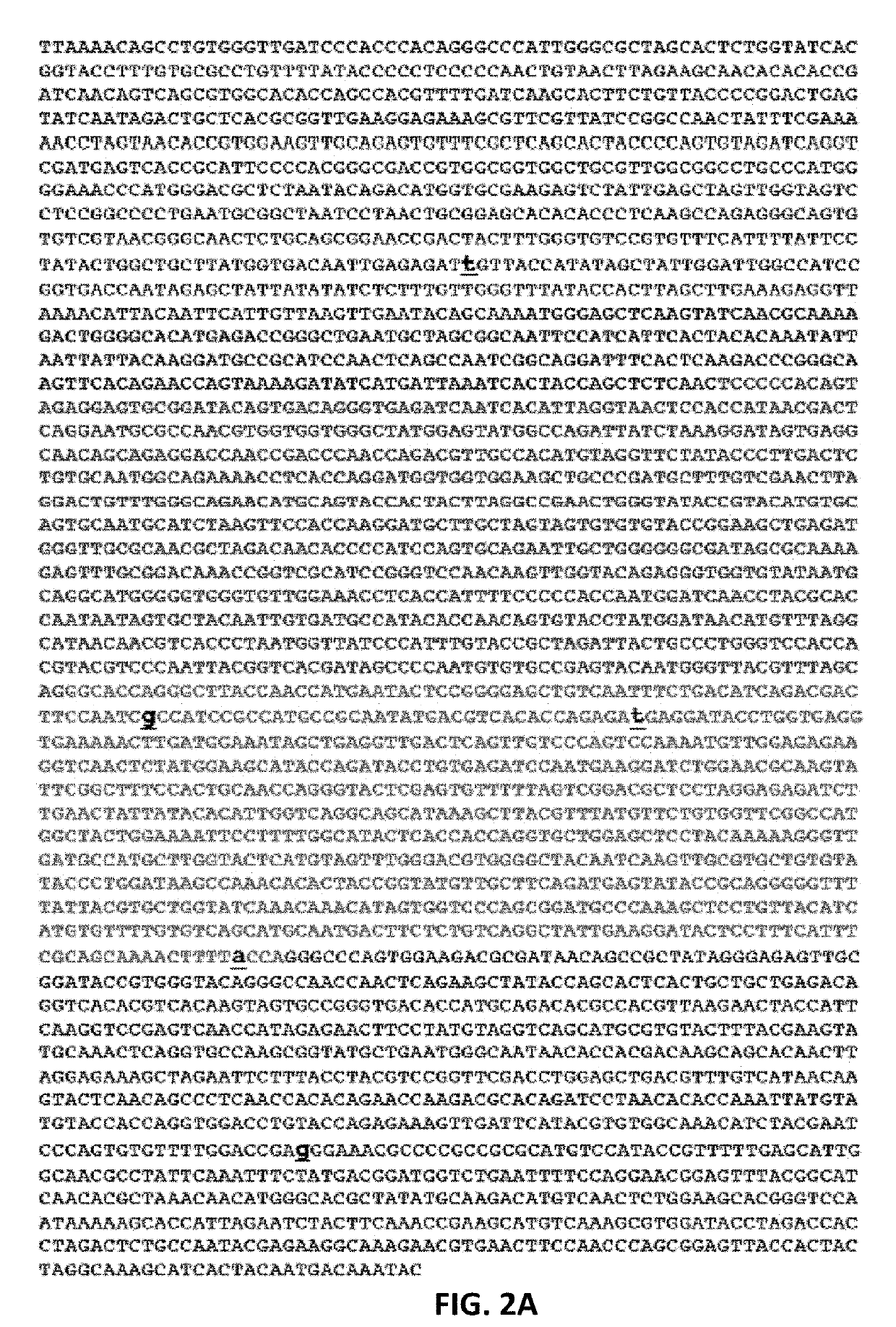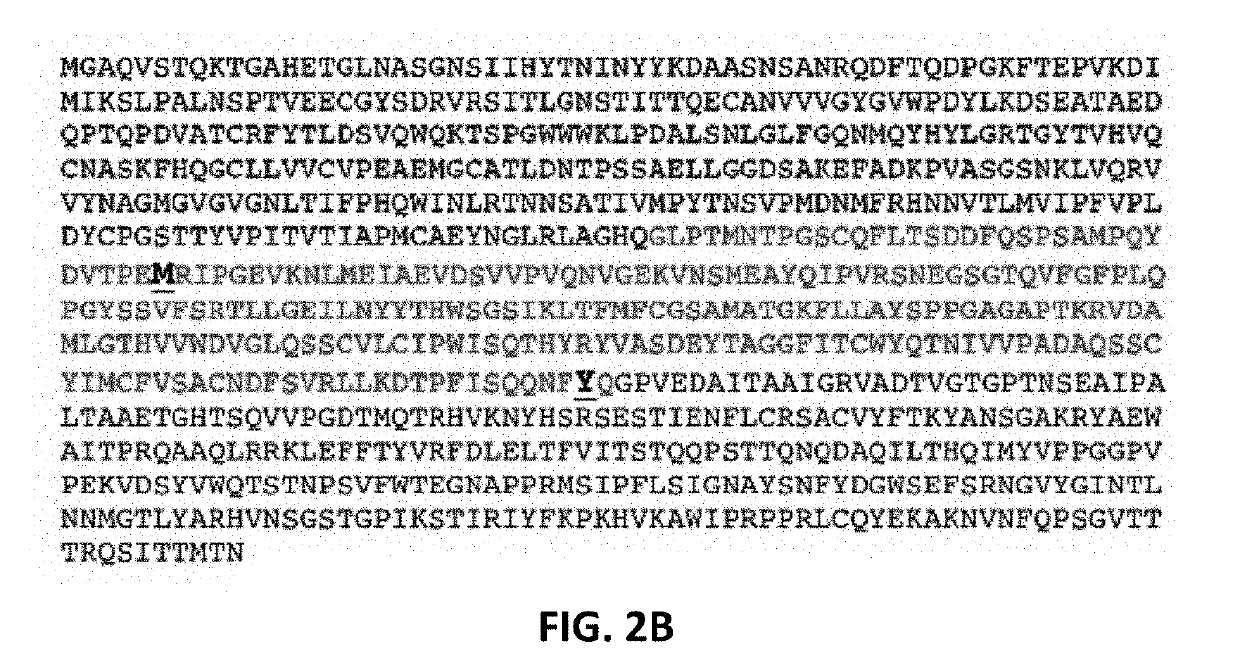Method for Treating Cancer with a Coxsackievirus B3 (CVB3) Variant
a coxsackievirus and variant technology, applied in the field of coxsackievirus b3 group (cvb3) viruses and its derivatives, can solve problems such as tumor destruction
- Summary
- Abstract
- Description
- Claims
- Application Information
AI Technical Summary
Benefits of technology
Problems solved by technology
Method used
Image
Examples
example 1
lity and Construction of CVB3 PD
[0110]The Appplicant received the starting virus PD from Michaela Schmidtke, (Institute of Virology and Antiviral Therapy, University of Jena), which sequence has been published (GenBank ID: AF231765.1; https: / / www.ncbi.nlm.nih.gov / nuccore / AF231765). The virus replicates in CAR / DAF-negative CHO cells and can be propagated in them. The virus was partially sequenced after multiplication.
[0111]A comparison of the PD variant used herein and the state of the art sequence of PD was performed. There, it was shown that the inventive PD variant used herein has in the VP3 protein a mutation towards the PD variant described in the literature (FIG. 2B), which is why it was designated as PD-0 in the following. In more detail, on nucleic acid level there are in total 5 nucleotide differences towards the virus PD reported in literature (FIG. 2A). One of them in 5′UTR and the others in VP1 (one) and VP3 (three). Among the nucleotide differences is one silent mutation...
example 2
AF are Differentially Expressed on Colorectal Carcinoma Cell Lines
[0112]Recently, it has been shown that the CVB3 strains Nancy, 31-1-93 and H3 use CAR and DAF for infection, whereas the strain PD uses sulfated Heparan (HS), but may also bind to CAR and DAF. We focused on colorectal cancer as this is one of the most common cancers worldwide with poor outcome and different colorectal cancer cell lines do express HS6ST2, the enzyme, which catalyses the transfer of sulfate groups to position 6 of the N-sulfoglucosamine residue in HS.
[0113]Expression of virus receptors on the cell surface is an important prerequisite for virus infection. CAR and DAF represent the primary and the co-receptor for CVB3, respectively. To determine the expression of the different CVB3 receptors on colorectal carcinoma cells, we measured the level of CAR and DAF of nine colorectal carcinoma cell lines (Colo680h, Colo205, DLD1, Colo320, Caco-2, HCT116, SW480, SW620, LS174T) using flow cytometry. Seven cell lin...
example 3
ins Differentially Infect and Lyse Colorectal Carcinoma Cell Lines
[0114]To determine whether CAR / DAF expression may influence the ability of CVB3 Nancy, 31-1-93, H3 and PD-0 to infect and lyse colorectal carcinoma cell lines, we used five human colorectal carcinoma cell lines (DLD1, Colo680h, Colo205, Colo320 and LS174T) exhibiting different levels of CAR and DAF expression. These cell lines were infected with a virus strain at an MOI of 1 or 10, and viral infection was determined by measurement of the amount of viral RNA genomes 24 h after infection by quantitative RT-PCR. Each virus strain was detected in its target cell line, but there were significant differences in the infection rates. High and moderate infection rates were detected for PD-0 in all cell lines. Strain 31-1-93 showed also moderate and high infection rates, but only in some of the colorectal carcinoma cell lines (LS174T and DLD1). In the other cell lines, it was low. The infection rates for Nancy and H3 were gener...
PUM
| Property | Measurement | Unit |
|---|---|---|
| Decay rate | aaaaa | aaaaa |
Abstract
Description
Claims
Application Information
 Login to View More
Login to View More - R&D
- Intellectual Property
- Life Sciences
- Materials
- Tech Scout
- Unparalleled Data Quality
- Higher Quality Content
- 60% Fewer Hallucinations
Browse by: Latest US Patents, China's latest patents, Technical Efficacy Thesaurus, Application Domain, Technology Topic, Popular Technical Reports.
© 2025 PatSnap. All rights reserved.Legal|Privacy policy|Modern Slavery Act Transparency Statement|Sitemap|About US| Contact US: help@patsnap.com



